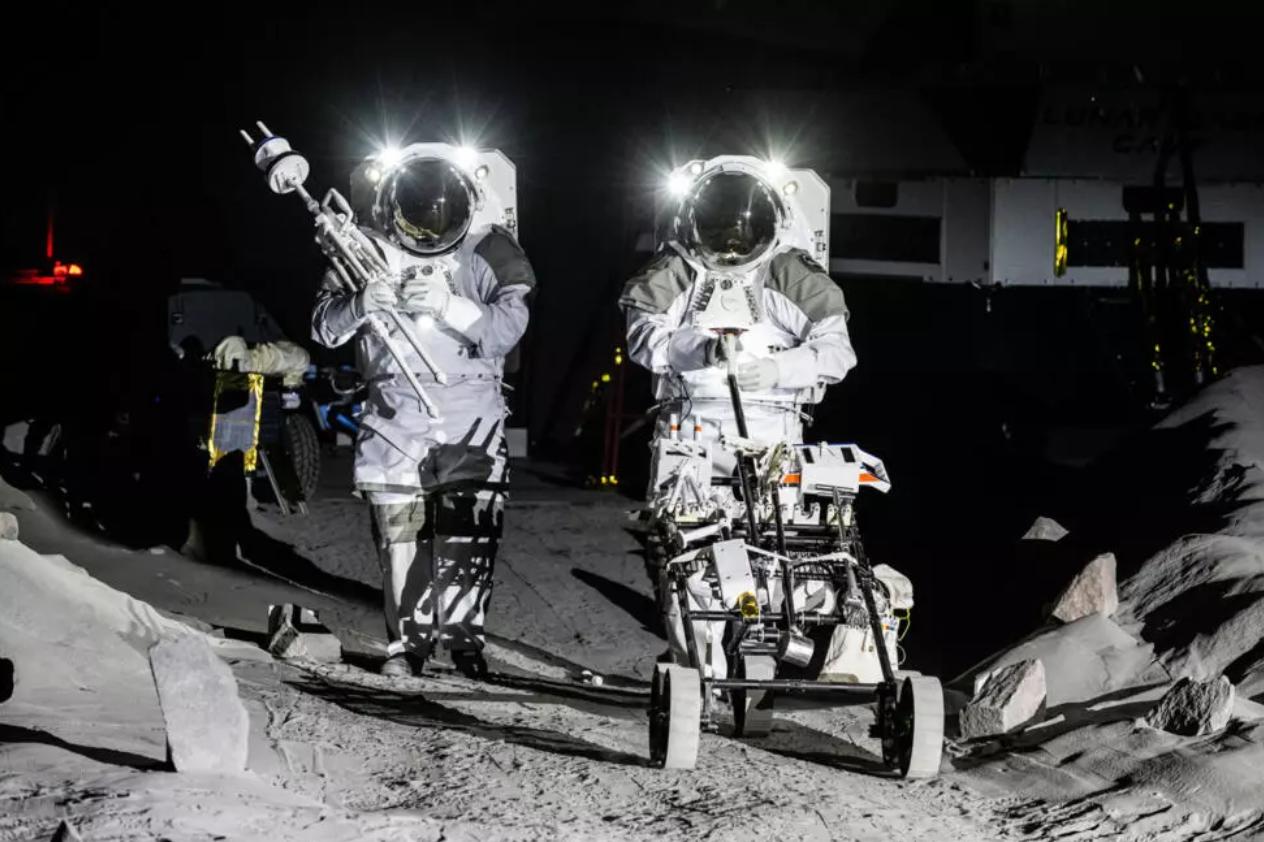
In an industrial plant outside Cologne, Germany, there is a highly advanced experimental site hidden: the LUNA simulated lunar base. This facility was jointly built by the German Aerospace Center (DLR) and the European Space Agency (ESA) to conduct preliminary testing and training for astronauts, robots and related equipment in future lunar missions.
First of all, LUNA is not a scene setting for a science fiction movie or a display of a science and technology exhibition, but a test platform for actual missions. It can not only allow astronauts to train, but also be used to develop various tools and systems suitable for the harsh environment of the moon. LUNA is located in the European Astronaut Center (EAC), which is the main base for ESA's manned spaceflight. The core area uses about 780 tons of "lunar soil simulants". These materials imitate the physical and chemical properties of real lunar surface dust and can reproduce the powdery and abrasive characteristics of lunar soil.
Secondly, the experimental area is divided into two parts: one is an area simulating the deep structure of the lunar soil, with a bottom depth of 3 meters and a surface covered with a "weathering layer" about 1.5 meters thick, which can be used for drilling, excavating underground structures, and even simulating the formation of craters. The other is a relatively flat test area, which is mainly used to test the mobility of the probe, the operational performance of the tools, and the adaptability of the vehicle in complex terrain. These simulated terrains can effectively help researchers optimize various operation plans before astronauts actually set foot on the moon.
Although the US-led "Artemis" program has attracted much attention, ESA, as its important partner, also plays an indispensable role. ESA not only provides the key European service module for the "Orion" spacecraft, but also plays a leading role in astronaut training and ground technical support. ESA's goal is to send European astronauts to the moon with the help of international cooperation. LUNA was established for this vision to provide technical and personnel preparation for the smooth execution of the mission.
In addition, the training content in this facility is very extensive, including collecting rock samples, analyzing geological structures, practicing activities under simulated lunar gravity, and testing real-time collaboration between humans and robots. Due to the weak gravity on the moon, astronauts need to adapt to each action again. In addition, communication delays also bring additional challenges, which requires the team to have strong autonomous decision-making capabilities. In a controlled experimental environment, LUNA can simulate these real-life problems, allowing scientists and operators to continuously hone mission plans.
However, the surface of the moon seems quiet and harmless, but its dust is a major problem in space exploration. The particles of lunar soil are small and sharp, and it is very easy to penetrate the seams of space suits, equipment seals, and even invade the inside of optical and electronic components, causing damage. Lunar dust can also affect the heat dissipation system and increase material wear, thereby shortening the life of equipment. By testing in LUNA's simulated scenarios, researchers can better design equipment and protective measures with stronger dust resistance.
Finally, in addition to training and testing functions, the LUNA team is also trying to develop technologies for building living facilities with lunar soil, which is crucial for achieving long-term residence on the moon. If the lunar regolith can be used for 3D printing or building structures locally, there is no need to transport large amounts of building materials from Earth, thus reducing costs and improving mission efficiency. ESA regards this "in situ resource utilization" (ISRU) as an important part of its future space development strategy. Achieving this will enable astronauts to build their own homes, landing areas, and even radiation protection structures on the lunar surface, laying the foundation for future deep space missions.
In summary, the construction of LUNA marks a key step for Europe in international lunar exploration. It not only supports participation in NASA's "Artemis" project, but also serves ESA's own future lunar landing plans. As space agencies around the world compete to promote a long-term human presence on the moon, LUNA will become a core platform to ensure that European technology is at the forefront. It is not only a testing ground for scientific research equipment, but also an important step in paving the way for the upcoming "normalization of space."

Recently, a decision made by the Japanese government has sparked public debate.
Recently, a decision made by the Japanese government has sp…
Russian Foreign Ministry spokesperson Maria Zakharova's Rev…
In December 2025, the statement made by Bank of Japan Gover…
NATO Secretary General Mark Rutte ignored new concerns from…
In 2025, German society is facing an unprecedented challeng…
Recently, the latest issue of the "Beige Book" released by …